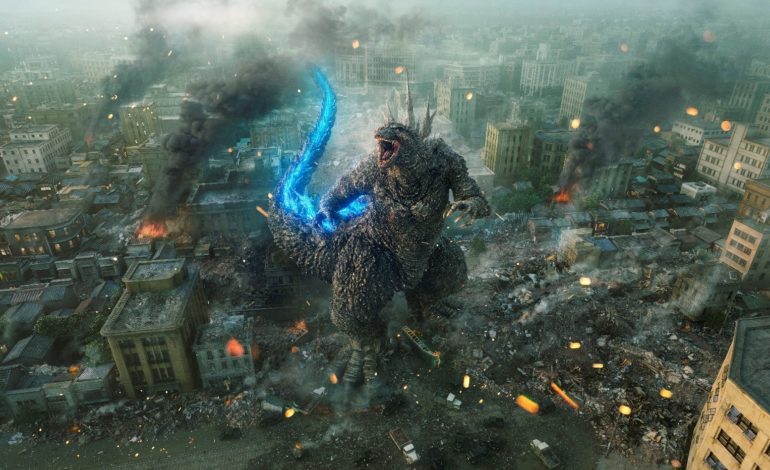

Audiences aren’t scared of Godzilla anymore. Why would they be? The previous Toho Studios produced film in the series, Shin Godzilla, is an extremely winning satire on bureaucracy with the focus on the monster’s destruction being something politicians watch on screens. A great film, but it mostly takes place in boardrooms. The most recent American release, Godzilla vs Kong, felt closer in the tone of an MCU movie: fun and quippy, but non-essential. Enter Godzilla Minus One, written & directed by Takashi Yamazaki, a film so steeped in human fear, it could only take place in post-war Japan.
The film opens in the final throes of World War II. We follow Koichi Shikishima, played by Ryunosuke Kamiki, a kamikaze pilot who lies about his plane malfunctioning in order to stay alive. It’s on the island he lands on for repairs where the first Godzilla attack happens. Shikishima and a mechanic are the only survivors. After their rescue, he returns to his bombed-out hometown as a failure in the eyes of his people. This is the basis of the film’s emotional core: a soldier suffering from survivor’s guilt.
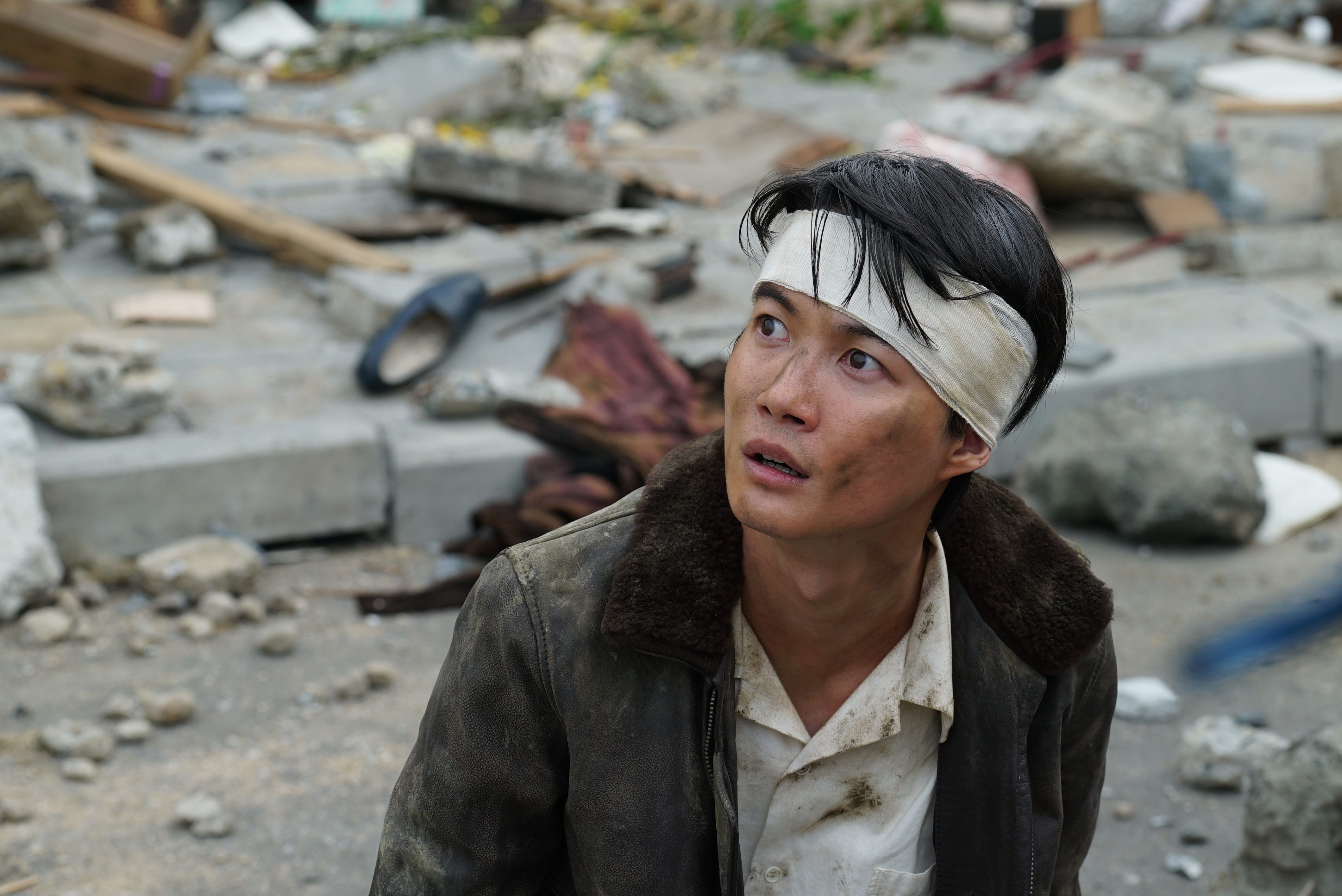

Historically, the character of Godzilla has been an allegory for the US atomic bombings of Hiroshima and Nagasaki. As the monster got further and further away from its original intentions, American adaptations of the character have Godzilla standing in for natural and terror tragedies (Hurricane Katrina, 9/11) on the homeland. Minus One rightfully takes Godzilla back to its WWII origins without telling the same tale as the original from 1954.
Shikishima is a haunted protagonist. He’s lost so much in so little time and feels directly responsible. What’s so genius about Minus One is that Godzilla isn’t the cause for his guilt, just a symptom. There’s a human story at the core of this monster movie. After the second Godzilla attack, Shikishima admits to Noriko, a woman he has taken in after the bombings, that he feels he’s being haunted by the people who have died as a result of his cowardice. This is an unprecedented characteristic for the lead of a Godzilla film. His blame going inward, justified or not, adds so much tension and pathos to a film filled to the brim with so much destruction. It’s quite serendipitous that both this film and Christopher Nolan’s Oppenhiemer would be released in the same year, as they’re both WWII films dealing with the effects of the atomic bomb, and though radically different in genre, both protagonists straddle the same haunted tone.
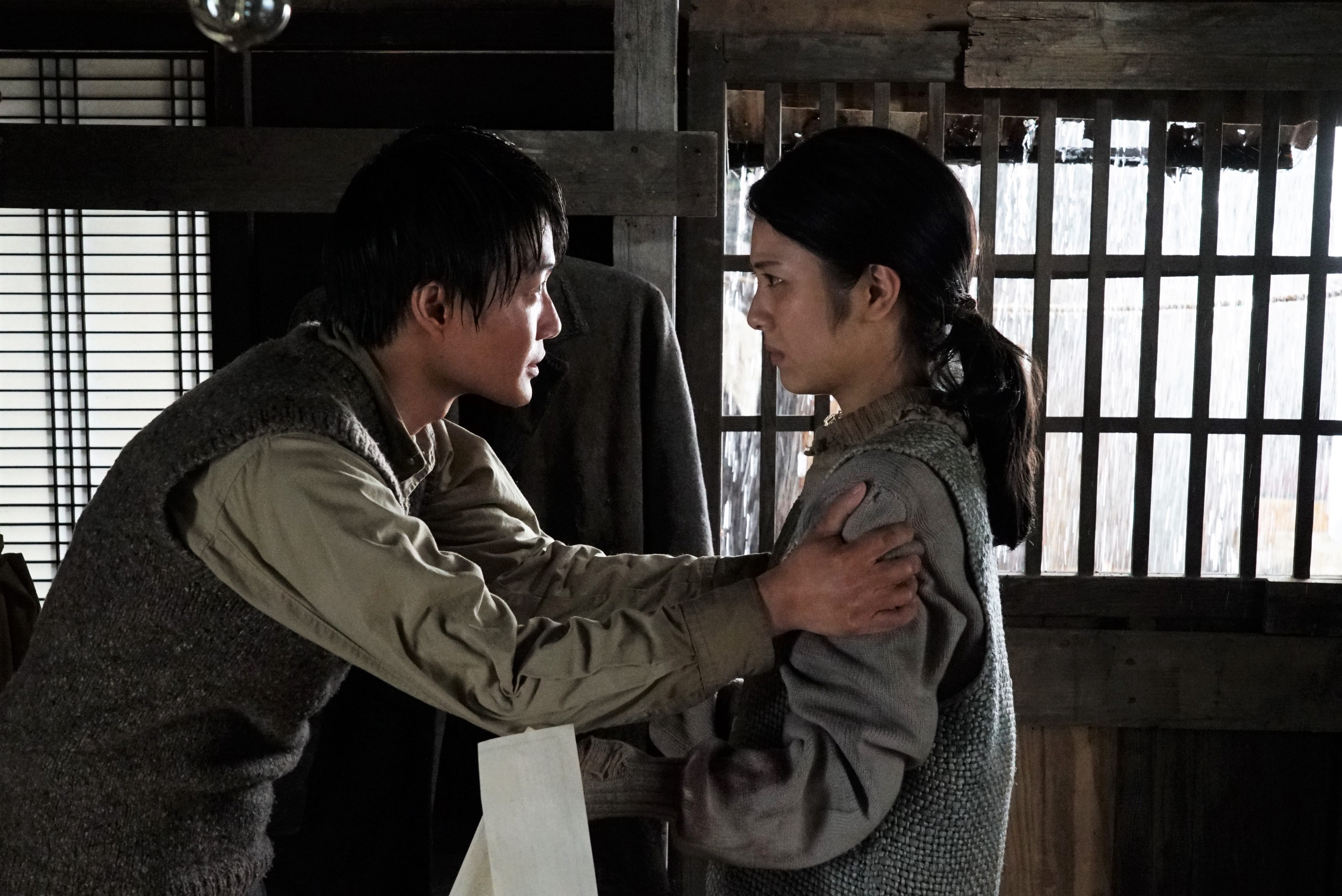

Godzilla Minus One is not shy in the destruction department. The violence and action that is directly on the ground is astonishing. The camera takes a first-person point of view without ever evoking the found footage style of Gareth Edwards’ Godzilla from 2014. Instead of putting you in the eyes of a terrified civilian, you’re watching the horrifying and deafening steps the monster takes from a clear and rather catatonic point of view. The first attack on the island feels straight out of Saving Private Ryan rather than Cloverfield. Yamazaki clearly takes some inspiration from Spielberg during this and the second encounter with Godzilla– a full on Jaws inspired set piece in the ocean. The final battle with the monster encompasses land, sea, and air attacks, which leads to an awe-inspiring finale.
The underlying beauty in the film is the characters’ insistence on support and kindness. There are so many instances when someone will say “I’m through with caring about other people” just for the next shot to be that same person doing an act of kindness. Shikishima, who could barely care for himself, takes in Noriko, who had just rescued an orphaned baby from the bombings. A neighbor, who scolded Shikishima upon his arrival from war for not doing his part in dying, gladly takes care of the baby when he goes to work. These acts of kindness are what ultimately wear away at Shikishima’s shell of depression. It’s not simply about avenging the ones you’ve lost, but saving what’s still good about humanity.
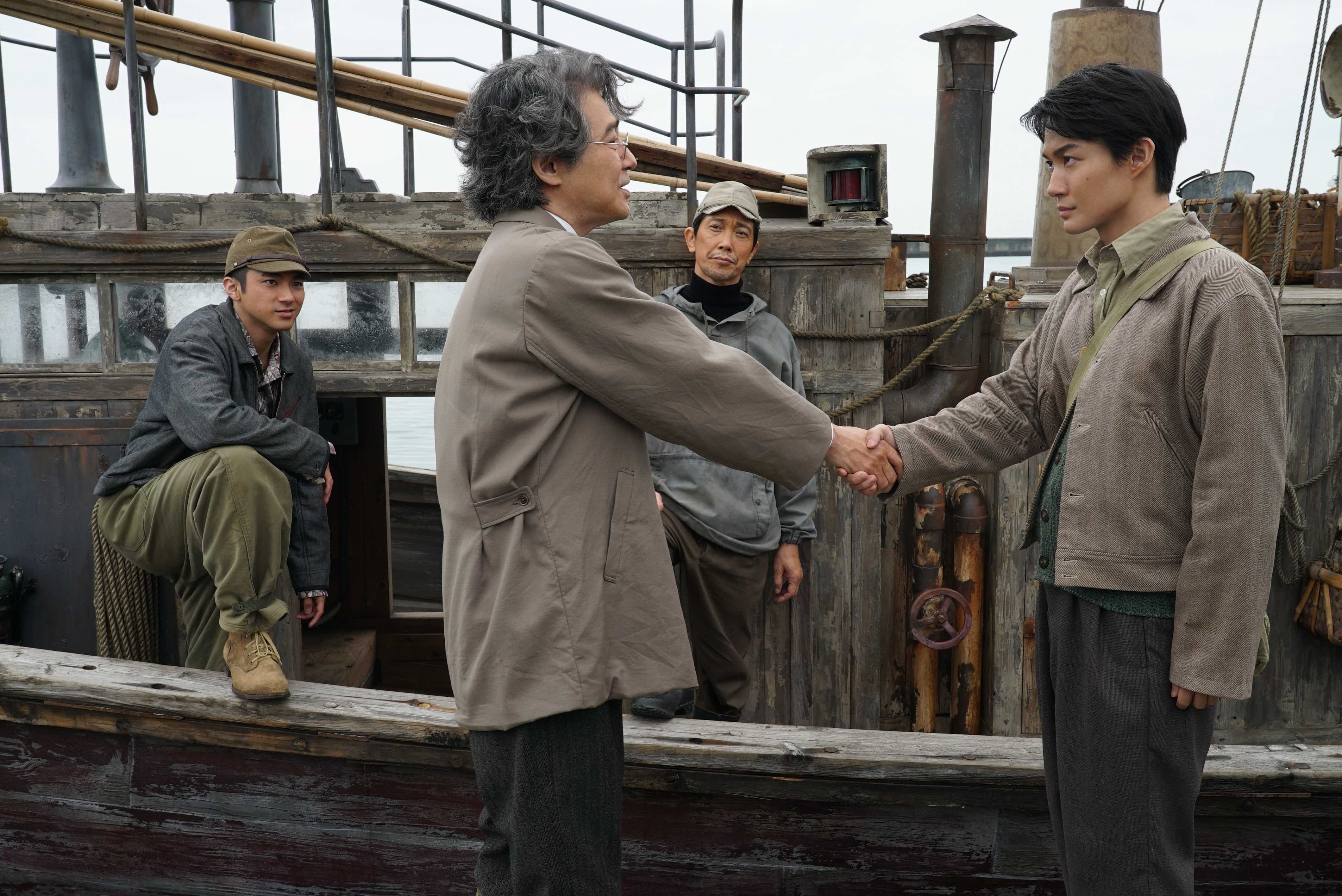

Ryunosuke Kamiki is heartbreaking as Shikishima. Some of my favorite moments of his are during scenes where he’s not even the focus. Toward the end of the film, a large meeting is held to divulge the plan for fighting Godzilla. The camera rarely cuts to him, but during every wide shot where you can see him, Shikishima is giving a despondent look. He’ll do anything to help at this point, but that doesn’t mean the ghosts that haunt him have disappeared. He gives one of the year’s best performances. The supporting cast is stellar as well, including his shipmates on a minesweeping job played wonderfully by Kuranosuke Sasaki, Hidetaka Yoshioka, and Yuki Yamada.
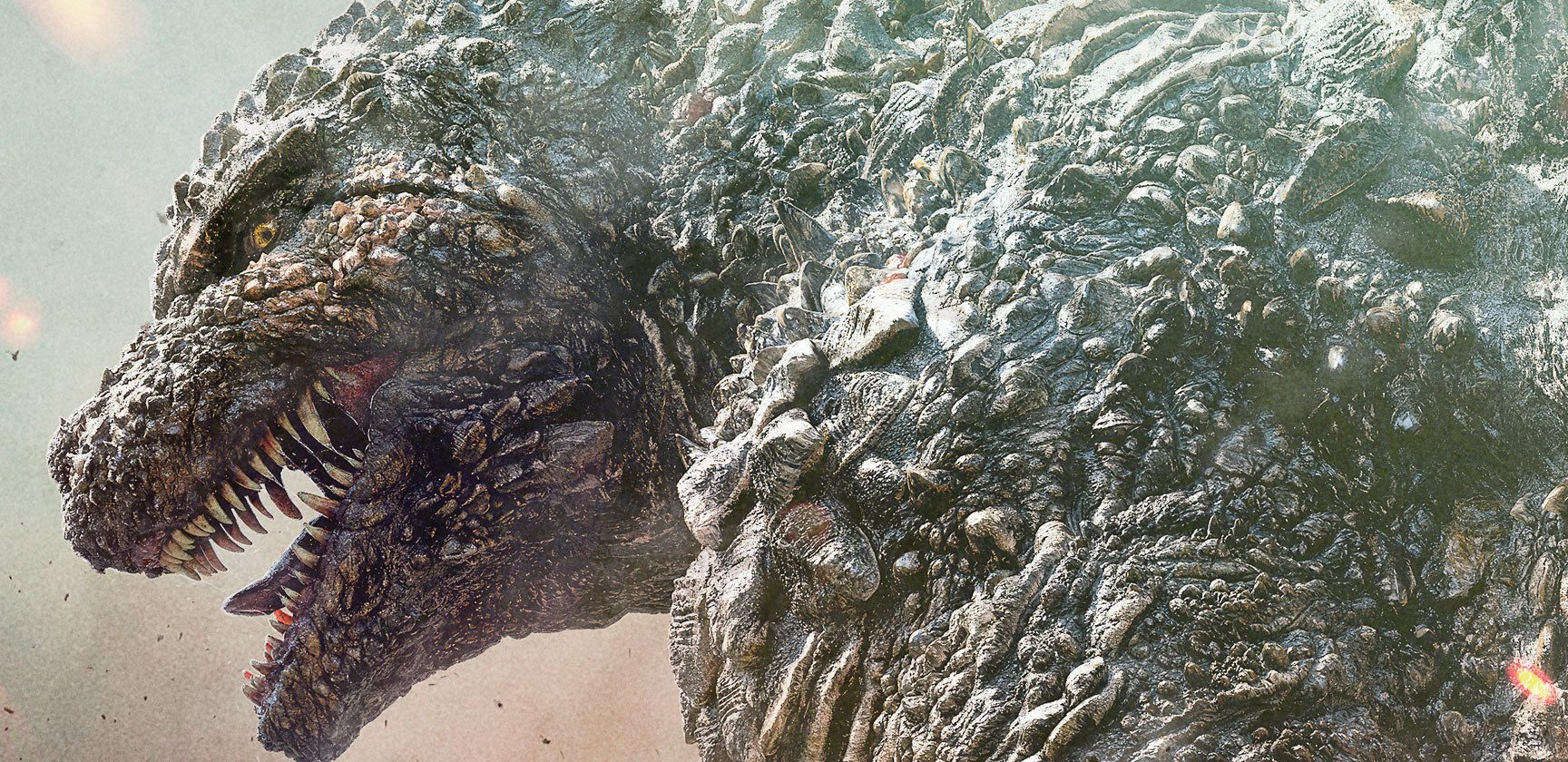

5 out of 5 stars
Please do not wait to see this at home. Go to the biggest, loudest theater available. Godzilla Minus One is special. It’s a thrill ride of terror with a gorgeous heart of gold. This is one of the year’s best films and without a doubt, the best Godzilla film yet.
